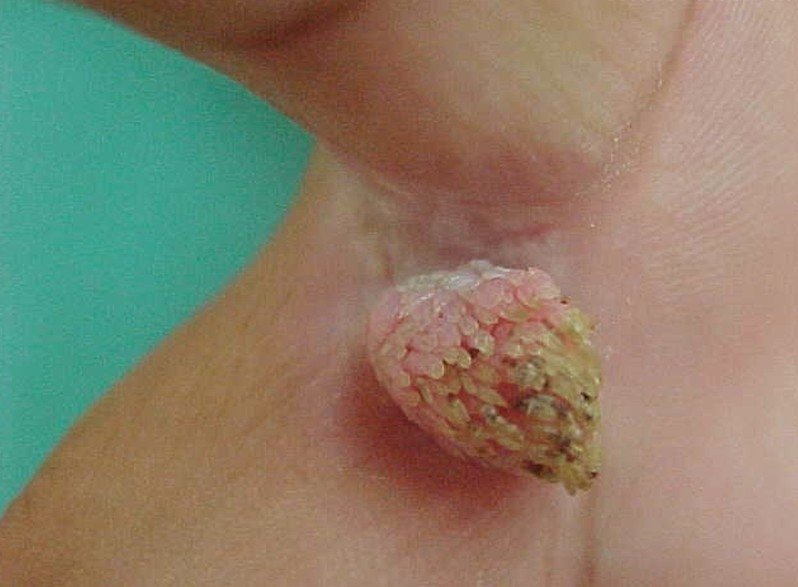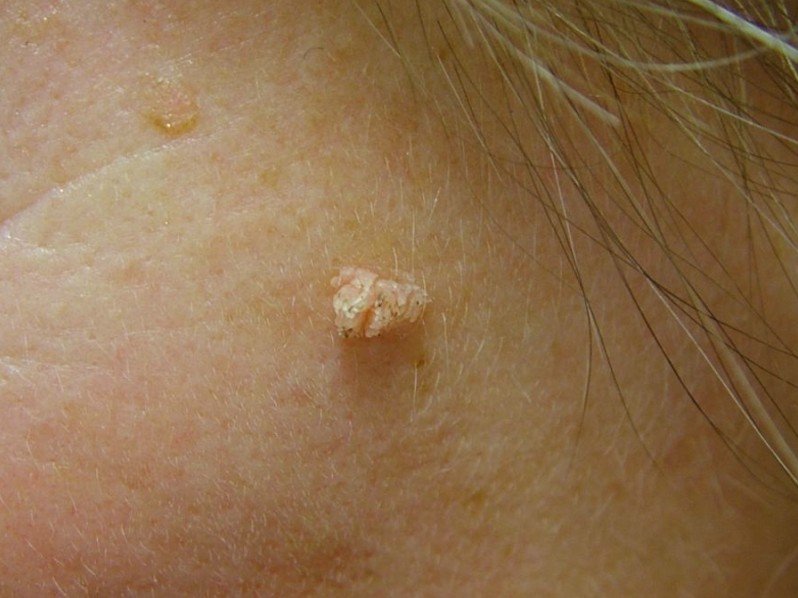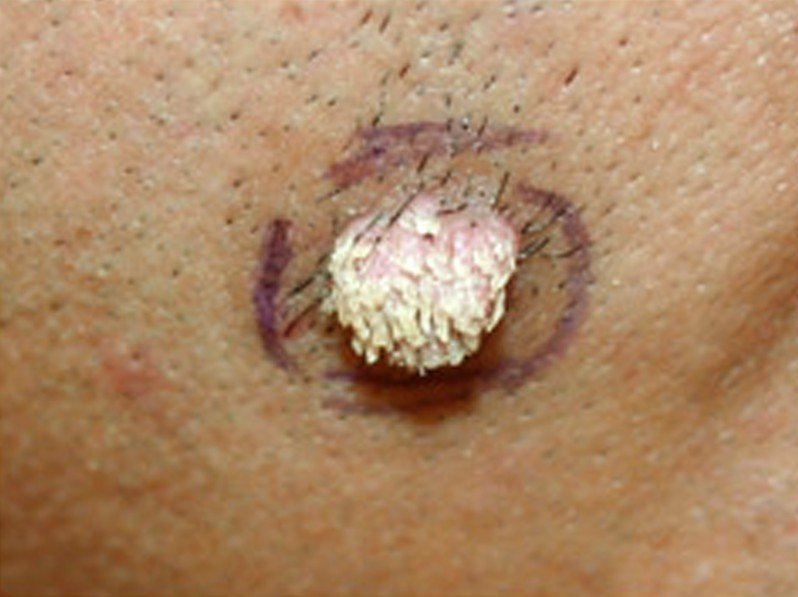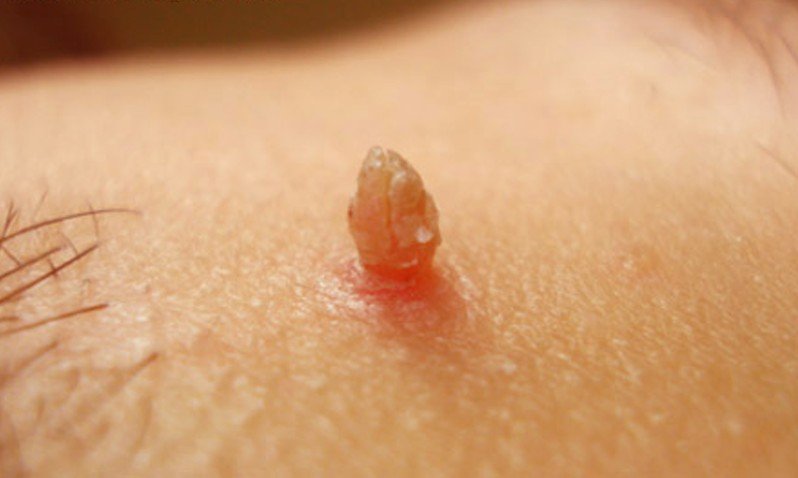Filiform Warts
Filiform warts are benign fleshy growths on the skin, which appear in persons who have been infected with the human papilloma virus. In general, warts are named according to the way they look or according to the place where they appear on the body. When it comes to filiform warts, these are named like that because they are projections of filiform shape. They often appear on the face and especially on the eyelids and lips but they can also appear on the neck. However, it is important to remember that filiform warts are not strictly limited to the face. They can also be identified in the axillary region or on the legs.
The infection with the human papilloma virus stimulates the top layers of the skin to grow excessively and lead to the appearance of filiform warts. The need for treatment because obvious, as these warts are highly contagious and also because of the aesthetic concern. Other from that, they usually do not cause any discomfort or pain to the pain and they do respond well to the treatment. The important thing is not delay getting the treatment, especially if they cause a lot of embarrassment.
Symptoms of Filiform Warts
These are the most common symptoms of filiform warts:
- Fleshy growths appear on the face, neck and other mentioned areas
- These growth are benign
- In some cases, they grow to be quite long
- Usually asymptomatic
- In some patients, the following symptoms may be however encountered:
- Itchiness
- Bleeding
- Tendency to spread to other parts of the body
- Painless
- If they appear near the skin folds or in areas where the skin rubs, the filiform warts might become sore and irritated.
What are the Causes of Filiform warts?
Filiform warts are caused, as it was already mentioned, by the infection with the human papilloma virus. However, not all types of HPV can cause filiform warts. These are actually caused by the following strains: 1, 2, 4, 27 and 29. Below, you will find the most common ways through which this virus is actually transmitted:
Human contact
- Touching the filiform warts is enough to become infected
- The person can contribute to the spread of the filiform warts from the original area to another area (otherwise lesion free) by touch
- If there is a breakdown in the skin, then the risk of becoming infected with the HPV is even higher.
Clothing
- Sharing your clothing with a person who has filiform warts increases the risk of yourself becoming infected, especially if those clothes have touched the infected area
Objects of personal hygiene
- Sharing your towels with a person who has filiform warts poses an increased risk for infection
- Sharing skin care products also poses a risk for infection
Contact with potentially-infected surfaces
- The HPV can be found on different surfaces, including shower floors or the surrounding surface of a pool
Shoes
- It is recommended to avoid sharing shoes with a person who has been infected with HPV
Risk factors that can favor the infection with HPV
- Breach in the skin – cut or abrasion
- Weak immune system
- Prolonged exposure to HPV
- Carrier of the HPV
- Warm and most skin.
Treatment for Filiform warts
These are the most common courses of treatment for filiform warts:
Topical irritants (active substance has a keratolytic effect)
- Salicylic acid application
- The active substances contained in this treatment will help the immune system to fight off the infection
- Several applications are recommended before the first results are noticeable (the wart will disappear)
- Trichloroacetic acid
- 5-fluorouracil
Cryotherapy
- Liquid nitrogen is used to freeze the fleshy growths
- After the actual procedure, blisters may appear in the treated area
- Patients are recommended to wear bandages in the treated area and remove the dead skin after a week
- Several sessions of freezing are required for a wart to completely disappear
- The sessions are repeated every two to four weeks; depending on the size, number and location of the filiform warts, there will be four to six therapy sessions
- There are patients who develop a severe local reaction to cryotherapy, so the freezing process is performed in a gradual manner
- Potential side-effects of cryotherapy include:
- Pain
- Tendon injury
- Superficial nerve injury
- Skin discoloration
- Scars
- Warts re-occur
Cantharidin
- Similar to cryotherapy
- Causes the skin to blister
- The blister dries up and the dead tissue is then removed
Minor surgery
- The procedure is performed using a scalpel or an electric needle
- Local anesthetic is applied before the surgery
- Immediate removal, no second procedure is necessary
- The skin might be scarred in the affected area
- Electrosurgery involves two procedures, meaning curettage and cautery
- The base of the filiform wart is burned by using diathermy or cautery
- After the surgery, it takes almost two weeks for the wound to heal
- Wart recurrence is expected
Laser removal
- Recommended for filiform warts that are difficult to remove through other methods
- Higher costs
- Risk of scarring
Other choices of treatment include:
- Occlusion with plaster or duct tape
- Applications of cytotoxic agents
- Systemic retinoids – these are only recommended for extensive warts
- HPV vaccine (not treatment, protects against infection with the HPV).
Are Filiform warts contagious?
Filiform warts are highly contagious and this is the reason why you should avoid touching them on another person. Also, it might be a good idea not to share clothes, personal items and objects of personal hygiene with a person who has this infection. You should always remember that the HPV can be taken from a public place as well, so, be sure to use personal slippers when using a public shower or when walking around the pool. And, if you have cuts or abrasions on the skin, be sure to protect those areas with a plaster. In this way, you reduce the risk of the HPV entering your body and causing filiform warts to appear.
Pictures
Collection of photos, images and pictures of filiform warts…







